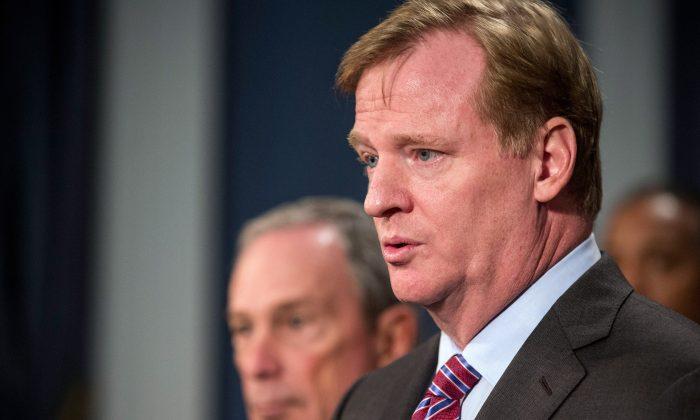In the past several weeks we have witnessed General Motors Corp. CEO Rick Wagoner—and an entourage of lobbyists—in Washington with hat in hand, pleading federal officials to bail out the struggling automaker.
The company reported dismal third-quarter results and suggested that without federal aid, it may not last through the New Year. GM’s October sales plunged 45 percent compared to last year. Ford Motor Co. and Chrysler LLC, the other two members of the “Big Three” automakers, may face similar fates if the economy continues to go south.
Many people may wonder: how has this come about? How has the supposed symbol of American manufacturing arrived at this brink of collapse?
Before we weigh the cost and benefit of any bailout, let’s first revisit the recent history of the U.S. auto industry.
Market Shift
Around ten years ago, armed with a cupboard full of SUV and pickup truck models, GM was hailed as brilliant. Sales of such high profit margin vehicles took off, the economy was booming, gas prices remained low, and U.S. automakers left their Japanese counterparts scrambling to catch up in truck sales.
Around 2004, gasoline prices began to creep up, and sales of SUVs and pickup trucks slowed. The resulting consumer shift from large SUVs to smaller vehicles left the U.S. “Big Three”—whose business models emphasized high-margin SUVs—unprepared to compete. The last few years saw Japanese and Korean auto companies make a leap in overall market share, especially in compact vehicles.
GM was also a nonfactor in the hybrid market, another race the U.S. automakers lost to the Japanese. GM passed on hybrid technology, dismissing it as a gimmick where the cost savings didn’t justify the cost.
Toyota’s Prius hybrid compact car became the market leader soon after its introduction in the late 1990s, and hybrid vehicles became popular as a new push for “green” took hold. Overall, Toyota makes around 85 percent of all hybrids sold in the United States.
As for GM? The company introduced its lease-only electric vehicle EV1 in 1996 but discontinued after merely three years. Its first hybrid vehicle—a Saturn Vue SUV— arrived in 2006.
Legacy Costs
GM’s legacy pension and healthcare cost issues have been widely reported. Although it has recently renegotiated contracts with the United Auto Workers union, some analysts believe it may be too little, too late.
However, GM’s current workforce is hardly the problem—the company is saddled with having to provide generous pension and healthcare plans for scores of retired workers. Analysts estimate that GM pays more than 500,000 retirees and their spouses annually, a giant figure that few companies can fathom, much less afford.
Most companies have pension plans, but GM’s structure is much more daunting. The company has shed almost 70 percent of its total staff—from more than 800,000 worldwide to around 250,000—since the mid-1980s. This means that the current, smaller GM must support an overall workforce much greater than it could afford.
Hard Choices
The argument for saving GM is the same for saving the banking industry—some believe that the alternative would cripple the U.S. economy and wipe out jobs.
Some believe that GM represents the once-proud American manufacturing base, and saving GM equates to saving U.S. manufacturing. Unfortunately, that is not a viable reason to shell out billions of taxpayer dollars. What about the former garment and textile industries in New York, the steel industry in Pennsylvania, and the consumer products industry that once flourished in the United States?
Pride aside, a collapse of the U.S. automakers could prove devastating for employment. The “Big Three” employs about 250,000 American workers in total.
Auto parts makers may suffer, but with Toyota, Honda, and Nissan already producing a majority of their U.S. vehicles domestically, parts makers could simply divert their shipments away from Detroit to states like Georgetown, Ky., Marysville, Ohio, and Smyrna, Tenn. where the Japanese automakers already employ tens of thousands of American blue-collar workers.
U.S. Treasury Secretary Henry Paulson so far has resisted any additional aid for GM or the auto industry, but the new Democratic administration could quickly approve such plans in 2009.
But with GM stock trading around 65-year lows, the U.S. auto manufacturing industry is merely a shell of its former self. The biggest risk facing lawmakers and taxpayers is projecting future success for GM and the industry.
GM announced that it is burning through $2 billion in cash per month, and has cut costs to the bone. With such drastic cost-cutting measures, GM now lags far behind its Japanese counterparts in research and development funding and innovation. Recent consumer sentiment has also turned against U.S. automakers—with many reluctant to buy a car from a maker that may not exist in the near future. Which begs the question—even with federal money, how long can the U.S. automakers last?
Some analysts argue that much like investment banks that relied too heavily on subprime mortgage-related investments, U.S. automakers’ past strategies of overemphasizing SUVs and pickup trucks simply backfired.
Today, instead of working to catch up to its competitors in compact cars, the “Big Three” and its lobbyists are left to protest the increasingly stringent Corporate Average Fuel Economy (CAFE) measures aimed to increase fuel economy and lessen the U.S. carbon footprint.
Saving GM also sets a dangerous precedent for other industries and companies that could become less competitive in the future. With $700 billion already earmarked for the banking sector, the federal government is still struggling to contain the mortgage and housing crisis. How much more of taxpayers’ funds should go into saving private companies?
Companies, industries, and even nations can rise and fall. As time passes, new industries (renewable energy and biotech, anyone?) will undoubtedly sprout and new businesses will form. In today’s daunting economic environment, non-competitive companies should be allowed to fail. Only after we allow the free markets to trim its own excesses can it stabilize and begin an upward climb once again.




Friends Read Free